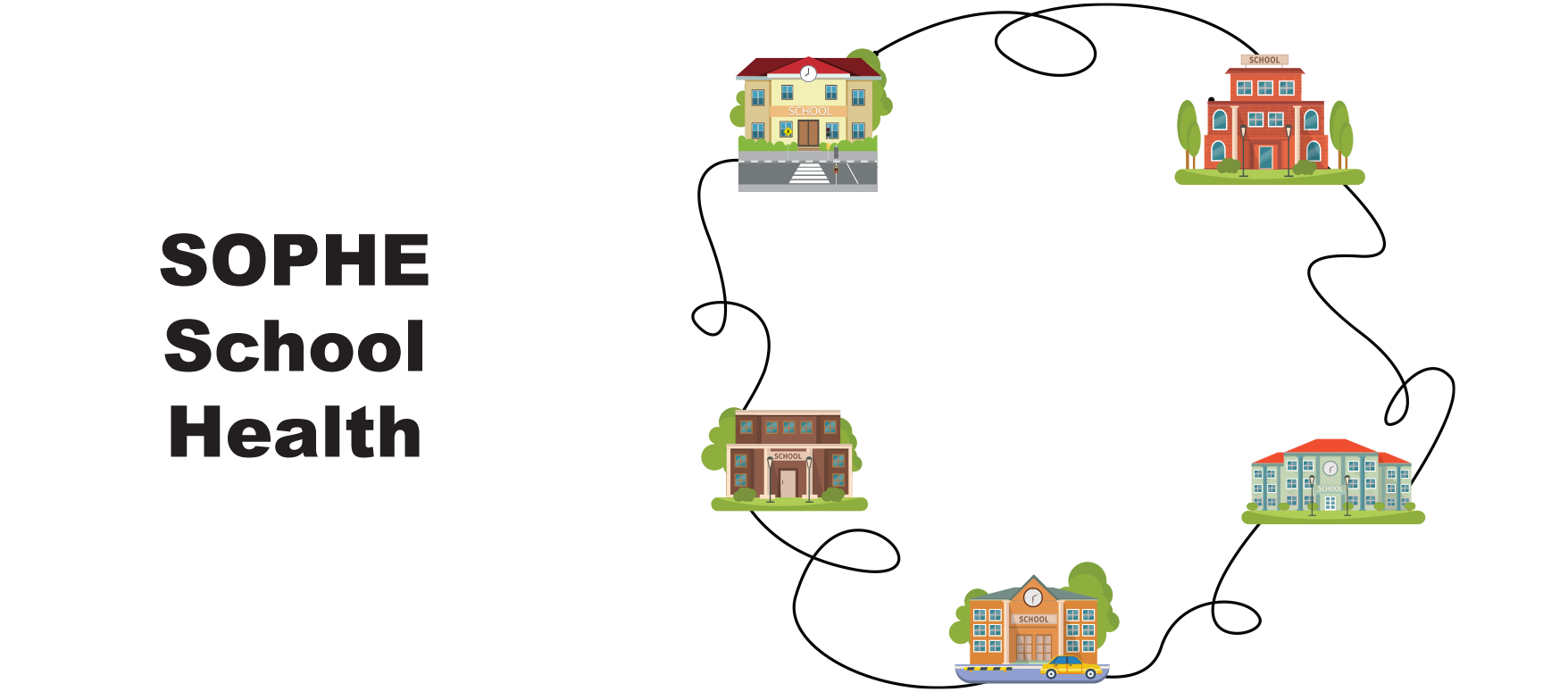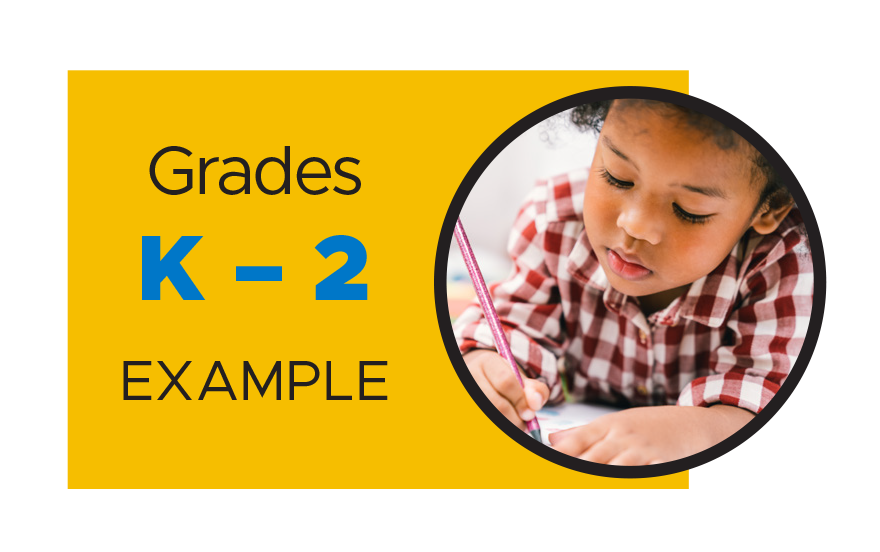
The Characteristics of Effective Health Education Curricula
What Is Health Education?
A health education curriculum refers to those teaching strategies and learning experiences that provide students with opportunities to acquire the attitudes, knowledge, and skills necessary for making health enhancing decisions, achieving health literacy, adopting health-enhancing behaviors, and promoting the health of others.1 A health education curriculum is the primary means through which schools deliver health education and should include the following:
• A set of intended learning outcomes or objectives that directly relate to students’ acquisition of health related knowledge, attitudes, and skills
• A planned progression of developmentally appropriate lessons or learning experiences that lead to achieving health objectives
• Continuity between lessons or learning experiences that clearly reinforce the adoption and maintenance of specific health-enhancing behaviors
• Content or materials that correspond with the sequence of learning events and help teachers and students meet the learning objectives
• Assessment strategies to determine if students have achieved the desired learning
The curriculum clarifies the health content that is important and what students should be able to do as a result of participating in health education learning experiences.
For more information about health education, visit the Centers for Disease Control and Prevention’s (CDC’s) latest webpage at https://www.cdc.gov/healthyyouth/health-education/index.htm.

What Does Research Say About Effective Health Education?
Health education curricula reflect the growing body of research that shows the importance of curricula that
• Emphasize functional health information (i.e., essential knowledge),
• Shape personal values and beliefs to support healthy behaviors,
• Shape group norms valuing healthy lifestyles, and
• Develop essential skills needed to adopt, practice, and maintain health-enhancing behaviors.2–15
Studies also demonstrate that less effective health education curricula often overemphasize teaching scientific facts to increase student knowledge.2–15 Reviews of effective programs and curricula and input from health education experts have identified 15 Characteristics of an Effective Health Education Curriculum.2–15 More information about the 15 characteristics can be found at https://www.cdc.gov/healthyschools/sher/characteristics/index.htm.

How Can Teachers Use the 15 Characteristics of Effective Health Education Curricula in Their Practice?

Some school districts purchase commercially available health education curricula that have been evaluated to show positive impacts on student health outcomes. Often, these evaluated health education curricula support several of the 15 characteristics (e.g., use of theory, culturally inclusive teaching strategies) found to contribute to the effectiveness on student outcomes. Other school districts use locally developed health education curricula that may rely on individual health teachers to create unit and lesson plans. Regardless of the curriculum type, understanding and applying the 15 characteristics is one of the core principles in selecting, developing, and delivering effective health education programs. Teachers who purposely apply and incorporate the Characteristics into all health education unit or lesson plans, learning activities, and assessments may help increase students’ likelihood of adopting and maintaining healthy behaviors.
The 15 Characteristics of an Effective Health Education Curriculum focus on different aspects of health education curriculum development and implementation. To learn practical strategies about how teachers can apply the 15 characteristics in their daily practice, click on each of the characteristics listed below. Examples of how to support each characteristic are provided at K–2, 3–5, 6–8, and 9–12 grade level spans.
To view in PDF format, please click here.
Directions: Click on the grade-level icon below for examples of how to support the characteristics in a lesson.
Resources
To view Characteristics in PDF format, please click on the Characteristic below.
Characteristics Introduction: The Characteristics of Effective Health Education Curricula
Characteristic 1: Focuses on clear health goals and related behavioral outcomes
Characteristic 2: Provides functional health knowledge that is basic, accurate, and directly contributes to health-promoting decisions and behaviors
Characteristic 3: Focuses on reinforcing protective factors and increasing perceptions of personal risk and harmfulness of engaging in specific unhealthy practices and behaviors
Characteristic 4: Addresses personal values, attitudes, and beliefs
Characteristic 5: Uses strategies designed to engage students
Characteristic 6: Addresses social pressures and influences
Characteristic 7: Builds personal competence, social competence, and self-efficacy by addressing skills
Characteristic 8: Provides opportunities to reinforce skills and positive health behaviors
Characteristic 9: Addresses individual and group norms that support health-enhancing behaviors
Characteristic 10: Provides age-appropriate and developmentally appropriate information, learning strategies, teaching methods, and materials
Characteristic 11: Incorporates learning strategies, teaching methods, and materials that are culturally inclusive
Characteristic 12: Provides opportunities to make positive connections with influential others
Characteristic 13: Includes teacher information and plans for professional development and training that enhance effectiveness of instruction and student learning
Characteristic 14: Provides adequate time for instruction and learning
Characteristic 15: Is research based and theory driven
References
1. Centers for Disease Control and Prevention. Health Education Curriculum Analysis Tool, 2021, Atlanta, GA: CDC; 2021.
2. Botvin GJ, Botvin EM, Ruchlin H. School-Based Approaches to Drug Abuse Prevention: Evidence for Effectiveness and Suggestions for Determining Cost-Effectiveness. In: Bukoski WJ, editor. Cost-Benefit/Cost-Effectiveness Research of Drug Abuse Prevention: Implications for Programming and Policy. NIDA Research Monograph, Washington, DC: U.S. Department of Health and Human Services, 1998;176:59–82.
3. Contento I, Balch GI, Bronner YL. Nutrition education for school-aged children. Journal of Nutrition Education 1995;27(6):298–311.
4. Eisen M, Pallitto C, Bradner C, Bolshun N. Teen Risk-Taking: Promising Prevention Programs and Approaches. Washington, DC: Urban Institute; 2000.
5. Gottfredson DC. School-Based Crime Prevention. In: Sherman LW, Gottfredson D, MacKenzie D, Eck J, Reuter P, Bushway S, editors. Preventing Crime: What Works, What Doesn’t, What’s Promising. National Institute of Justice; 1998.
6. Kirby D. Emerging Answers: Research Findings on Programs to Reduce Teen Pregnancy. Washington, DC: National Campaign to Prevent Teen Pregnancy; 2001.
7. Kirby D, Coyle K, Alton F, Rolleri L, Robin L. Reducing Adolescent Sexual Risk: A Theoretical Guide for Developing and Adapting Curriculum-Based Programs. Scotts Valley, CA: ETR Associates; 2011.
8. Lohrmann DK, Wooley SF. Comprehensive School Health Education. In: Marx E, Wooley S, Northrop D, editors. Health Is Academic: A Guide to Coordinated School Health Programs. New York: Teachers College Press; 1998:43–45.
9. Lytle L, Achterberg C. Changing the diet of America’s children: what works and why? Journal of Nutrition Education 1995;27(5):250–60.
10. Nation M, Crusto C, Wandersman A, Kumpfer KL, Seybolt D, Morrissey-Kane, E, Davino K. What works: principles of effective prevention programs. American Psychologist 2003;58(6/7):449–456.
11. Stone EJ, McKenzie TL, Welk GJ, Booth ML. Effects of physical activity interventions in youth. Review and synthesis. American Journal of Preventive Medicine 1998;15(4):298–315.
12. Sussman, S. Risk factors for and prevention of tobacco use. Review. Pediatric Blood and Cancer 2005;44:614–619.
13. Tobler NS, Stratton HH. Effectiveness of school-based drug prevention programs: a meta-analysis of the research. Journal of Primary Prevention 1997;18(1):71–128.
14. U.S. Department of Health and Human Services. Preventing Tobacco Use Among Young People–An Update: A Report of the Surgeon General. Atlanta (GA): U.S. Department of Health and Human Services, Centers for Disease Control and Prevention, National Center for Chronic Disease Prevention and Health Promotion, Office on Smoking and Health, 2011: 6-22–6-45.
15. Weed SE, Ericksen I. A Model for Influencing Adolescent Sexual Behavior. Salt Lake City, UT: Institute for Research and Evaluation; 2005. Unpublished manuscript.
Acknowledgements
The Society for Public Health Education (SOPHE) extends its appreciation to the authors and the following individuals for their subject-matter expertise. The document does not necessarily represent the official views of these individuals or their respective organizations.
| Susan Telljohann, HSD, CHES The University of Toledo | Bonnie J. Edmondson, EdD, MS Southern Connecticut State University | Marlene Tappe, PhD Minnesota State University, Mankato |
| Chelsey Hughes, MS, CHES Society for Public Health Education | Melissa Fahrenbruch, MEd Centers for Disease Control and Prevention | Leigh Szucs, PhD, CHES
Centers for Disease Control and Prevention |
| Access Date | Quiz Result | Score | Actions |
|---|
Registrant Login
Have you logged in?
Remember to log in to access this free tool!




